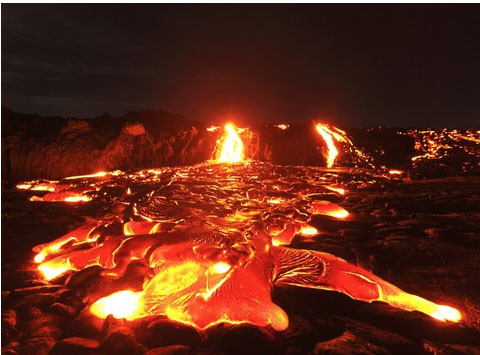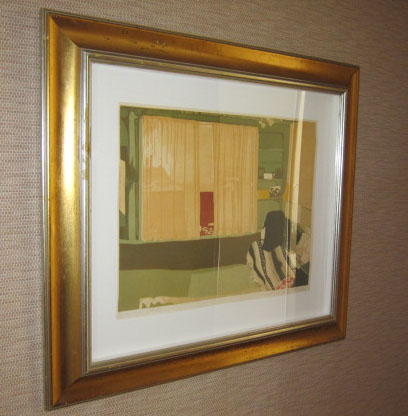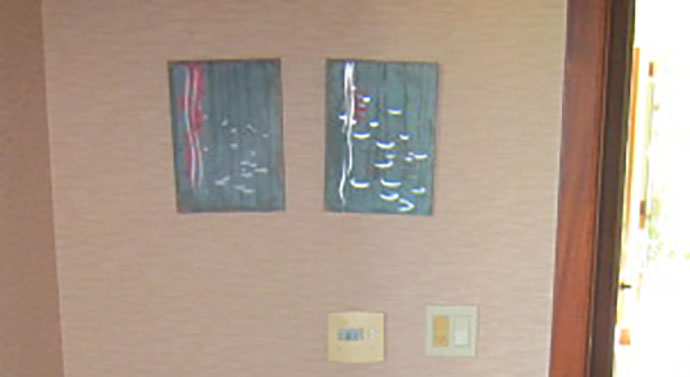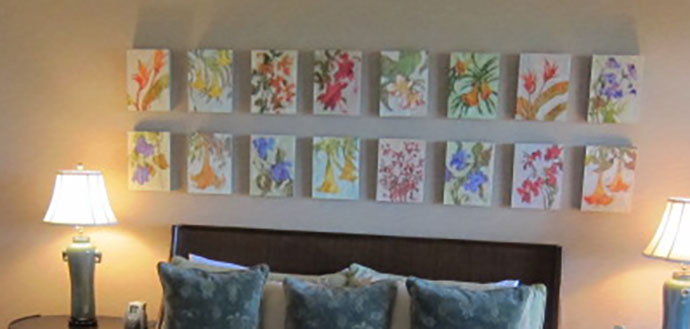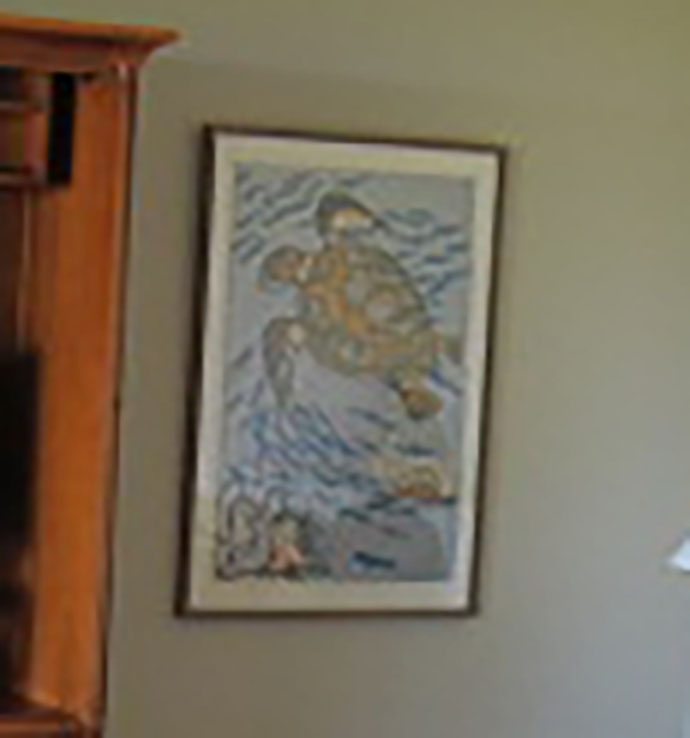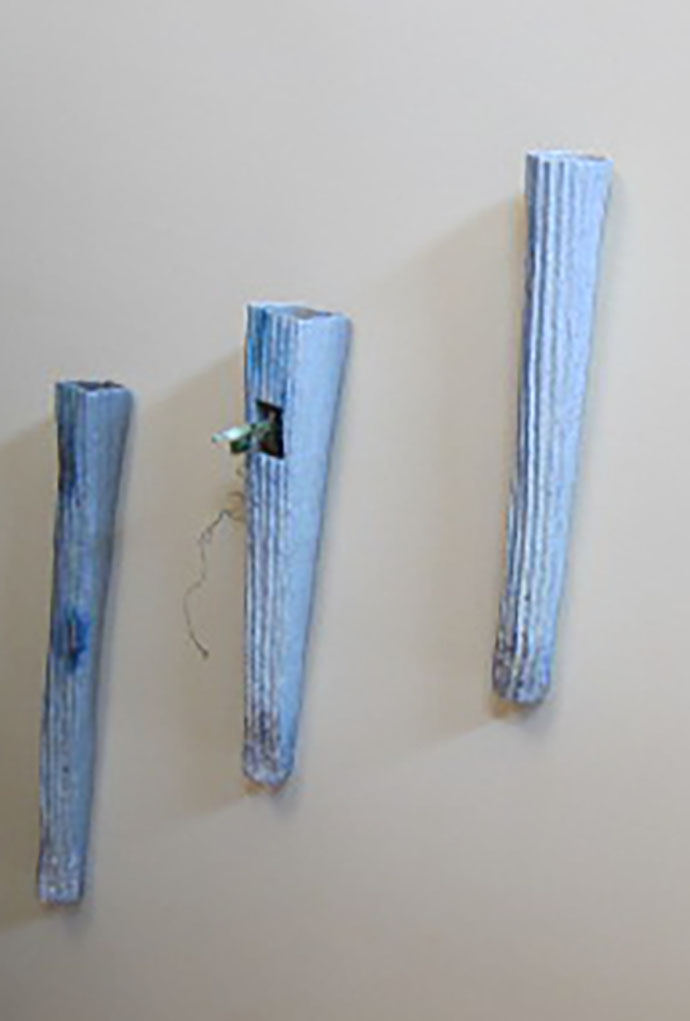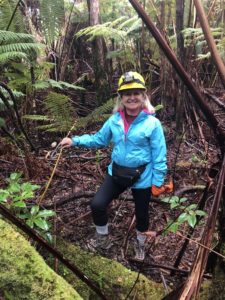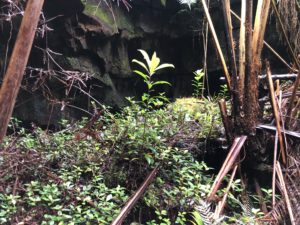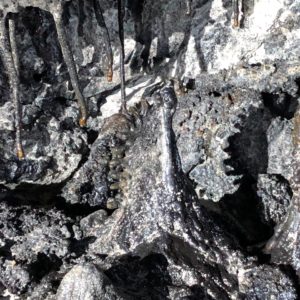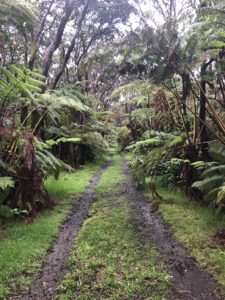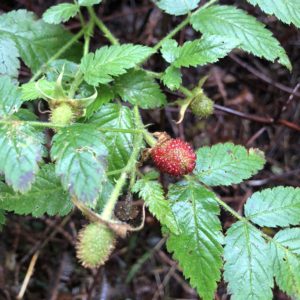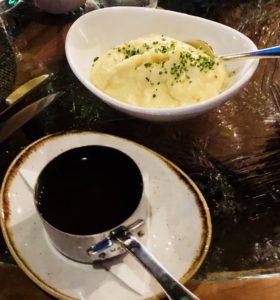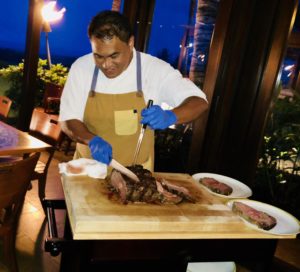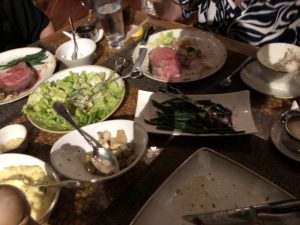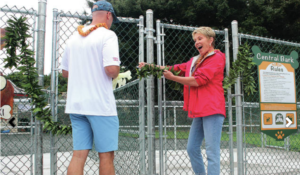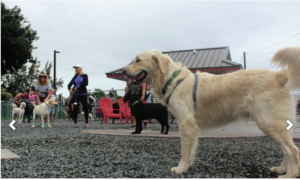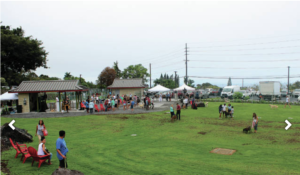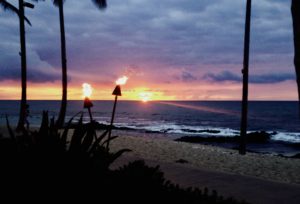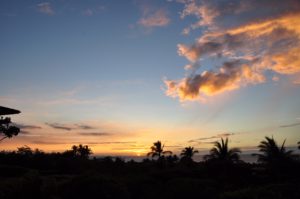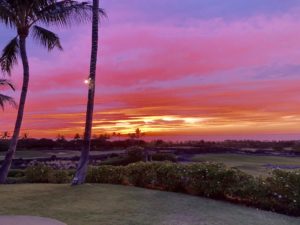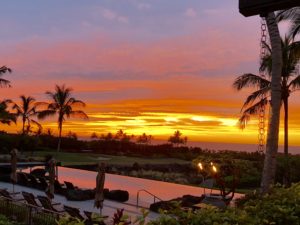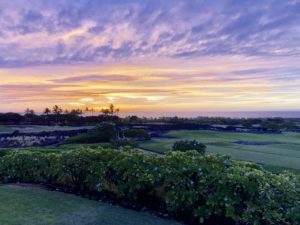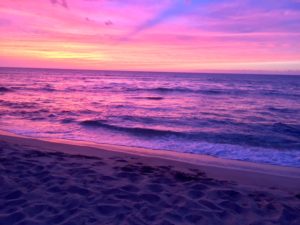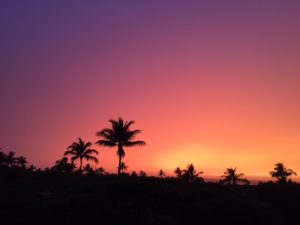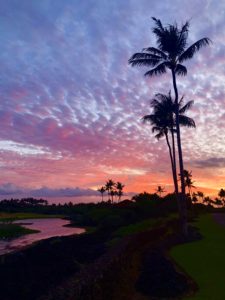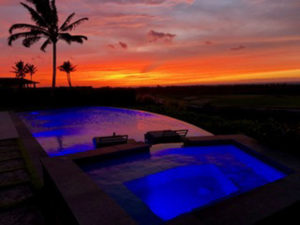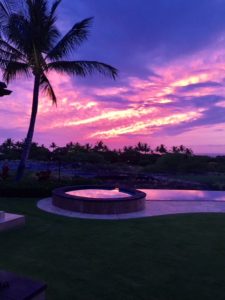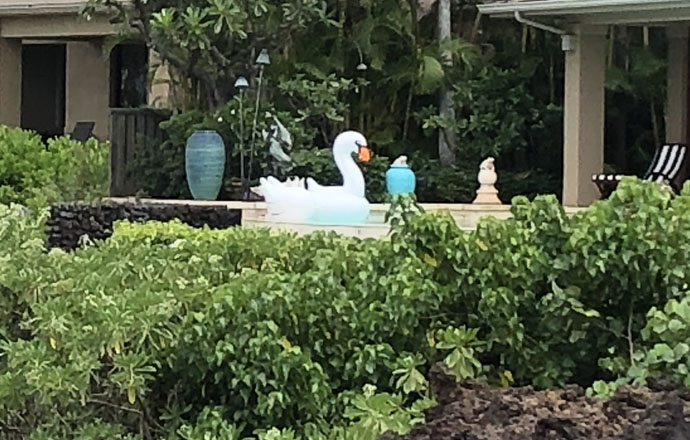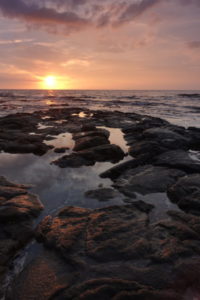
|
UPDATE 5/11/2018: A week after the Kilauea volcano on Hawaii’s Big Island began sending smoke and gas into the air and opening fissures in the ground along the volcano’s slopes, officials worry the worst is yet to come with a major eruption possible. The lava level in Kilauea’s main crater Halemaʻumaʻu continues to recede at an alarming pace and rockfalls from the crater walls have generated small ash clouds. If the lava level drops below the underground water table, it could trigger a much more violent explosion, sending giant plumes of ash up to 20,000 feet in the air and projectiles the size of refrigerators tumbling down its slopes, according to the United States Geological Survey (USGS). The government agency says it could erupt in a matter of days or weeks. During the last major eruption of Kilauea, in 1924, the ejection of ash and large boulders continued in a series of eruptions that lasted around two weeks and ash fell as far away as Hilo, today home to one of the island’s two major airports. The USGS is advising those in the area to read its guidelines online about how to mitigate the effects of volcanic ash. So far, some 2,000 people have been evacuated from the communities of Leilani Estates and Lanipuna Gardens, as fifteen individual fissure vents in the ground spewed lava hundreds of feet in the air and released noxious sulfur dioxide into the air. Thirty-six structures, including over two dozen homes, have been destroyed and around 117 acres of land is still covered in lava, according to a report from Hawaii County’s Civil Defense. Even as volcanic activity in the East Rift Zone has quieted down, the hazardous fumes in the air has rendered entire communities off-limits. Officials indefinitely closed the Hawaii Volcanoes National Park to the public on Friday. Officials still say that the most hazardous effects of any larger eruption should be limited to the relatively sparsely populated area around the volcano. As of right now, popular resorts such as the Four Seasons Resort Hualalai, Mauna Lani Bay Hotel & Bungalows, Mauna Kea Beach Hotel, Fairmont Orchid, and Hilton Waikoloa Village appear to be operating as normal—they’re on the island’s western coast, about 100 miles from Kilauea. While both of Big Island’s airports—Hilo and Kona—remain open and flights haven’t been largely disrupted by ash clouds yet, it’s worth checking with your tour operator or hotel to learn of any disruptions before you travel as conditions could change quickly. Hawaiian Airlines announced that guests traveling to/from/via Hilo or Kona airports between May 3 and May 13 can make a one-time change to their reservation without any of the associated fees. Original story published May 3 continues below: Hundreds of magnitude 2.0 to 4.0 earthquakes—250 in the last 24 hours—have been rocking Hawaii’s Big Island near the Kilauea volcano, indicating that the world’s most active volcano is living up to its name. The United States Geological Survey says that an increase of lava bubbling up to the surface is the likely scenario here. Travelers heading to the Big Island, or any of the Hawaiian islands, should be warned of the impact of the volcano’s heightened activity, but at this point it shouldn’t prevent you from taking your much needed beach vacation. So far, the USGS expects the lava (should it come to the surface) to impact the Big Island’s East Rift Zone, or southeastern tip below Hilo. According to the government agency, lava is already flowing under the ground of Highway 130, the mostly residential area’s main thoroughfare. There are a number of vacation homes in the area, so be sure to check on conditions with your host if your stay is occurring in the next week. The area is preparing for evacuation, the mayor’s office reports, should the lava burst up to the surface, but there’s also no way to pinpoint exactly where the lava would erupt. So far, none of our Readers’ Choice Award-winning resorts are reporting any disruptions, as they’re all located relatively distant from the volcano, on the northwestern edge of the Big Island. The main impact to tourists will be access to Hawaii Volcanoes National Park, about 15,600 acres of which is closed to visitors. “The recent eruption changes and increased seismicity around the East Rift Zone and Pu‘u ‘Ō‘ō vent may threaten land and the community outside the park. Most of the park, which is 333,308 acres in size, remains open,” said park superintendent Cindy Orlando in a statement Tuesday. Kilauea’s status as the most active volcano in the world—it’s been continuously erupting since 1983—is part of the tourist draw to the Big Island. Its eruptions are often slow and stunning. One such eruption even created a lava waterfall last year, pouring 1,600-degree glowing, melted rock into the Pacific. While the Pu‘u ‘Ō‘ō vent (where this eruption is stemming from) is in that closed acreage, the actual summit of Kilauea is still open to the public. Its main crater, Halema‘uma‘u, just saw a surge in lava, to the point where some has been spilling out the top, and is best seen from the Jaggar Museum overlook, the National Park Service says. This is a developing story and has been updated. Thank you Eve BernsteinKilauea continued to erupt wildly on Hawaii’s Big Island this week, shooting lava hundreds of feet into the air and burning homes to the ground. As of Sunday night, 10 fissure vents were open in the area and at least 26 homes had been destroyed, according to the county civil-defense agency. The U.S. Geological Survey (USGS) said some of the lava was shooting 330 feet into the air — higher than the tip of the Statue of Liberty’s torch, The Washington Post reported Monday morning. Even more outbreaks are expected in the coming days, according to the USGS. While it seems very sudden and unpredictable, this outpouring of molten earth has been looming for weeks. Kilauea has a history of burning Hawaii’s forests — and a few neighborhoods — to the ground. Kilauea has been erupting continuously since 1983It only makes the news every once in a while, but this volcano has been actively erupting along its East Rift Zone for more than three decades. Sometimes the activity is lowkey, and other times it prompts the evacuation of nearby subdivisions. Kilauea’s main caldera has a lake of lava that periodically rises to the surface, so it usually gets a lot of attention. The National Park visitor center and hotel — Volcano House — are on the rim of the caldera. But a smaller cinder cone to the east is where all of the recent action is. Pu`u O`o formed at the beginning of the 1983 eruption, although the activity has since moved away from the cinder cone along the East Rift Zone. It has more than two dozen cratersUnlike stereotypical volcanoes — tall with a clear peak and a caldera on top — Kilauea is relatively low-elevation (above sea level) and has several craters that mark its history of eruptions. The Kilauea caldera is the main crater, but there are more than 10 other craters on the volcano, mainly along its East Rift Zone. It’s probably the world’s most active volcano“World’s most active volcano” is difficult to objectively measure, but geologists don’t seem to have a problem ranking it at the top. Kilauea’s longest period of inactivity was just 18 years between 1934 and 1952. Other volcanoes that compete for this title are Eyjafjallajokull in Iceland, Mount Etna in Sicily and Sakurajima in Japan. Hawaii Volcanoes National Park is one of the earliest establishedThe National Park Service was established in 1916, and Volcanoes National Park was designated just a few weeks earlier. It was the 15th national park designated, preceded only by other similarly famous parks like Yellowstone, Yosemite and Crater Lake. There was once a golf course on the volcanoThe old clubhouse is still standing, just east of the visitor center, with a couple of rooms that golfers would stay in overnight. The 19th hole was the caldera. People used to lounge around on the crater rimChilling on the edge of a notoriously active volcano? Sulfur dioxide hanging heavy in the air? No big deal! These were brave souls, but to be fair, they didn’t know much about volcanoes back then. If you tried to do this now, you’d be kicked out of the park and fined. Kilauea is home to Pele, goddess of the volcanoPelehonuamea, to be exact. “She who shapes the sacred land.” In Hawaiian myth and culture, Pele is the goddess of fire and volcano and devours the Big Island when she is perturbed. She has a wicked temper and she made her home in the Halema’uma’u crater. Kilauea’s sister volcano, Mauna Kea, is taller than Mount Everest Mauna Kea’s summit registers at about 14,000 feet above sea level. But from its base, which is on the ocean floor, the mountain is approximately 33,500 feet tall — nearly a mile taller than Mount Everest (29,029 feet), according to the USGS. ByANGELA FRITZ
Lava and gas continued to erupt from Kilauea volcano across a remote, rural neighborhood on Hawaii Island, and by Monday had destroyed 35 structures, including at least 26 homes, authorities said. By Monday, the emission of lava from multiple fissures had become minimal, the U.S. Geological Survey Hawaiian Volcano Observatory said, but “this is likely only a pause in activity; additional outbreaks or a resumption of activity are anticipated as seismicity continues in the area.” Video published by the USGS showed asphalt roads being slowly consumed by a moving wall of molten rock, with thick red-hot lava glowing underneath, as black smoke billowed upward. USGS helicopter footage showed a river of ash cut through lush tropical forest, with a lava fountain that had been active Sunday billowing red hot molten rock around the charred landscape. At least 10 fissures have developed since Kilauea began a fresh eruption Thursday in the Leilani Estates neighborhood, about 25 miles east of the summit of Kilauea,
one of the world’s most active volcanoes and Hawaii Island’s youngest. Ground cracks have begun to emerge crossing Highway 130, west of the eruptions, the USGS said. Fluctuating and intermittent eruptions are likely to continue along the volcano’s eastern shoulder, known as the lower East Rift Zone, and scientists warned that although Leilani Estates remains at highest risk, other areas in the region could also fall at risk if the eruption continues. There was no way to say for certain how long the current eruption would continue. In 2014, lava spilled out from the volcano, and authorities worried for months that the town of Pahoa would be inundated. In the end, the supply feeding the lava shut down and it never inundated the town; just one home was destroyed. In 1990, lava flows of up to 80 feet buried the town of Kalapana, known for its historical sites and black sand beaches. A church, a store and roughly 100 homes were destroyed. The last time Kilauea opened up fissures in a residential area was in 1960, just outside the town of Kapoho. Lava fountains in that eruption were higher — up to 330 feet. When the crack began to seal up, the lava fountain that resulted was even taller. Efforts to divert the lava away from homes during that event failed. Kapoho managed to survive for two weeks after the first eruption, but its fortunes changed when less viscous lava spilled out. In the end, Kapoho was destroyed. An estimated 1,800 people live in the affected area of the current eruption, and many have sought housing in shelters, with friends or on surrounding islands. Hawaii County officials have allowed some residents to return to their homes briefly to retrieve items and pets left behind during the sudden evacuation Thursday. Lava flows have been disrupting electricity and water supply, and officials were working to build a temporary bypass water line to restore water to Kapoho, Vacationland and Pohoiki. Residents were not permitted access to the nearby neighborhood of Lanipuna Gardens, as levels of toxic gas coming from the eruptions were deemed too hazardous to allow for safe entry to the area. Other areas in the region may come under risk if the eruption progresses. Some schools reopened Monday, including those in the town of Pahoa. But four others remained shut. The state of Hawaii has six active volcanoes, four of which are on Hawaii Island. The three others are: • Mauna Loa, which the USGS says is the largest volcano on Earth and last erupted in 1984. That eruption lasted for 22 days and caused flows of lava that got to within about 4 1/2 miles of Hilo, the largest populated area on the island. • Hualalai, which last erupted in 1801, creating a lava flow that is now underneath Kona International Airport. • Mauna Kea, the highest volcano on the island. It last erupted 4,500 to 6,000 years ago. Maui has one active volcano, Haleakala, which erupted 400 to 600 years ago. The state’s sixth active volcano, Loihi, is underwater, about 22 miles southeast of Hawaii Island, and last erupted in 1996. Hawaii tourism officials emphasized that the volcano threat was limited to a remote region of eastern Hawaii Island and was not interrupting flights. The closest resort areas, in Kona and the Kohala Coast, are on Hawaii Island’s west side, more than 100 miles away from the eruption. There are 169 active volcanoes in the United States — including underneath Yellowstone — and 1,550 in the world that are above sea level. We wouldn’t exist without volcanoes, scientists say. Volcanic eruptions provide nutrients, like nitrogen, for soil and their gases, especially water vapor, helped form the atmosphere we now have. “It provides so much good,” said volcanologist Janine Krippner of Concord University in West Virginia. “We just have to get out of their way while they do their thing.” By RONG-GONG LIN II
KAILUA-KONA — No tsunami was triggered by a magnitude-6.9 earthquake that struck at 12:33 p.m. Friday. The Pacific Tsunami Warning Center said the temblor occurred on south flank of Kilauea Volcano. It initially reported the earthquake as a magnitude-6.0, but later upgraded it to magnitude-6.4. “No tsunami is expected. Repeat. No tsunami is expected. However, many areas may have experienced strong shaking,” the center wrote in an information statement. 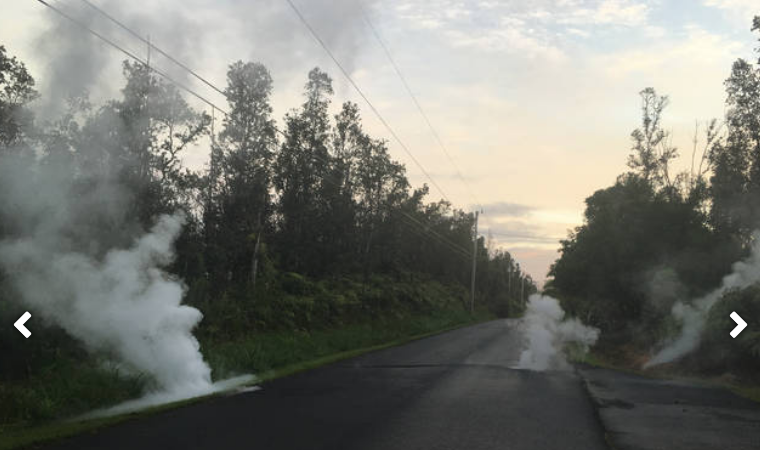 Steaming cracks at 5:57 a.m. Friday in Leilani Estates subdivision, moments before a fissure opened up on Kaupili Street. (HVO/Special to West Hawaii Today) Volcanic eruptions continue in Leilani Estates, with at least four fissures having formed by Friday afternoon, according to Hawaiian Volcano Observatory. The fissures involve mostly vigorous spattering and lava has yet to travel more than tens of yards from the vents. According to Civil Defense, the fissures are located on Makamae and Mohala streets in the lower portion of the subdivision. Janet Babb, HVO spokeswoman, said one was actively spattering as of 8:40 a.m., but activity can change quickly. “This is a completely dynamic situation, and changes can occur or could occur with little warning,” she said. Additional outbreaks are likely, and ground deformation and earthquakes continue in the area. The vents are preceded by ground cracking and strong gas emissions. Meanwhile, the lava lake continues to drop at Kilauea’s summit, HVO said. Hawaii County Police warned that ground cracks were seen on Leilani Avenue and that people should avoid that area. Hawaii Fire Department says there are “extremely high” levels of dangerous sulfur dioxide gas detected in the evacuation area. The first fissure opened on Mohala Street on Thursday afternoon and extended 150 to 200 yards by the evening. All residents of Leilani and Lanipuna Gardens are told to evacuate. Shelters are open at the Pahoa and Keaau community centers. Pohoiki Road is closed from Highway 132 to Highway 137 to allow evacuation efforts to proceed. Due to the eruption, Kua O Ka La Charter School, Hawaii Academy of Arts and Science, Keonepoko Elementary School, and all Pahoa schools are closed. Puna Geothermal Venture shut down Thursday following the eruption. A temporary flight restriction is in place. Drones can be confiscated. Hawaii Electric Light Co. Rhea Lee-Moku said there are reports of outages in Kaumana and parts of Hilo following a magnitude-6.9 earthquake at 12:33 a.m. Friday. It came about an hour after another temblor that registered a 5.6-magnitude. Both were located on the south flank at Kilauea. If you haven’t tried Sunday Night’s Family Dining Night at Ke ‘Olu your missing a good deal and a delicious dinner. Last Sunday Prime Rib and Roast Chicken were served along with Caesar Salad, mashed potatoes and gravy, sautéed mushrooms, green beans, horseradish sauce, bread and butter. All was served family style for sharing.
KEAUHOU MAUKA — Tails were wagging Saturday for the opening of Hawaii Island Humane Society’s Central Bark Dog Parks. Several dozen dogs and their people came out for the celebration of the first phase of the humane society’s Animal Community Center on 12 acres off Mamalahoa Highway, north of Haawina Street off Kuakini Highway. From large canines to little pups, the dogs quickly took to the fresh grass and doggy amenities as soon as they were let off their leashes. The first phase, which cost about $3.5 million, includes site and utility work for the entire 12 acres, a large-dog park, a small-dog park and administrative building. The dog parks are the first public ones on Hawaii Island. “Without the generous donors, this wouldn’t be happening,” said Scott Dodd, who co-chairs the Animal Community Center Capital Campaign with Barbara Kildow. The campaign committee is fundraising to complete subsequent phases, which include bigger areas to house more animals, a cat barn, welcome center, veterinary clinic, kupuna room and an education center. Ultimately, the Hawaii Island Humane Society will move all of its Kona shelter operations to the Animal Community Center. The large-dog park is open 9 a.m. to 4 p.m. on Saturday, Sunday and Wednesday, and there is no cost to enter. Eventually, it will be open seven days a week. While the small-dog park is also open, Dodd asked those with small dogs that are comfortable around bigger dogs to use the big-dog park because the grass within the small-dog park is still getting established. For more information and to donate, visit www.hihs.org.
By Chelsea Jensen West Hawaii Today cjensen@westhawaiitoday.com | Sunday, April 29, 2018, 12:05 a.m.
 • Waikoloa Plaza’s development team, business owners and county officials take part in the shopping center’s blessing ceremony and ground breaking Friday morning. (Photos by LANDRY FULLER/SPECIAL TO WEST HAWAII TODAY) WAIKOLOA VILLAGE — At a blessing ceremony and groundbreaking event Friday morning, Meridian Pacific, Ltd.’s owner and president Gary Pinkston said Waikoloa Village is a bit like coming home. “I grew up on a cattle ranch in Kansas and Parker Ranch used to ship us cattle to full feed,” he said. “Our firm opened an office in Hawaii in 1985 and we’ve been active developing shopping centers in the state ever since. This groundbreaking for Waikoloa Plaza is a great occasion.” Formerly named Waikoloa Village TownCenter, Pinkston said 100 percent of the project’s construction financing has been secured from Bank of Hawaii, and the shopping center is tentatively scheduled to open in early 2020. Originally, Meridian Pacific Ltd. planned to break ground last December and open the shops in two phases: the first in December 2018 and the second in December 2019. “We decided to open the shops all at once, which changed the timing,” Pinkston said. The 130,000-square-foot $40 million shopping center will encompass 19 square acres, with 35 retail stores filling spaces ranging from 800 to 35,000 square feet. Eighty-five percent of Waikoloa Plaza has been leased, Pinkston said, with tenants including Aloha Petroleum, Ace Hardware, Foodland, Fitness Forever, Family Health and Wellness, CrossFit AllStar, and dining outlets such as Balimo’s Pizza, Chef TK, L&L Hawaiian BBQ, Strato’s New York Pizzeria, SushHi and Bodhi Tree Juicery. Guy Kamitaki, treasurer for ACE Hardware, said he saw a void his store could fill in a new shopping center. “We wanted to service the community and all of the people here because they don’t have a hardware store,” he mentioned at the event. The developer is also in talks with Nail Salon, Island Holistic Healing, Verizon, Longs Drugs, Maui Taco’s, Dunkin’ Donuts, Denny’s, The UPS Store and McDonald’s, among others. “As we’re moving forward, I encourage everyone to let us know if there’s anything missing in the community,” Pinkston said, addressing the crowd Friday. “We will have Easter parades, Christmas functions — whatever you can help us incorporate into the shopping center we’ll do.” Larry Adams, director of sales and marketing for Aloha Petroleum, has been eagerly awaiting the opportunity. “We’ve been looking for a new location for probably 14 years and had several opportunities to go into the development, but none of the developers have had the vision like Gary and his team,” he said. “He invited us to come along with Foodland since we do some retail things with Foodland.” Even the state is involved in the project. Ongoing negotiations for the sale of 1.75 acres to the state would allow the long-sought Waikoloa Regional Library to be built on land near the post office, adjacent to the shopping center. “This shopping center is what we were looking for in our county, and with economic development will come prosperity for the community,” District 9 Councilman Tim Richards said. A proposed 150-room hotel is another unique aspect that Pinkston hopes to add to the shopping center. “The idea originated after I learned of the need from the community,” Pinkston said. “The decision for a hotel was also based on the seat count into the Big Island being up from 600,000 five years ago to 1.3 million in 2018. At the same time, the Hilton and others have taken 700 guestrooms out of service for condos.” Goodfellow Brothers has been hired to construct the parking lot, sewer/water system and all of the paving beginning in August, according to Pinkston. Meridian Pacific will handle the vertical construction scheduled to start in April 2019. Plans include two major entrances, one on Waikoloa Road and another on Pua Melia, about 1,000 feet makai of the post office. A third entrance would be across from the lower entrance to Waikoloa Highlands Shopping Center on Waikoloa Road. “We don’t foresee any added traffic along Waikoloa Road from construction trucks since we will use the south entrance,” Pinkston said. “Construction will be from 8 a.m. to 5 p.m.” Meridian Pacific, Ltd. has developed, financed and leased more than 55 shopping centers in California, Nevada, Colorado and Hawaii. On Oahu, the company has owned Koko Marina Center, Windward Mall, Town Center of Mililani and Waipahu Town Center. Their other Big Island project is the Puna Kai shopping center in Pahoa, scheduled to open in early 2019, Pinkston said.
Because the Ke ‘Olu course currently has been worked on and offers the following: Long rolls, two holes per green and two putt limits, Happy Hundreds is Happy to play it tomorrow!
Let’s see if we can get more sunset pictures. If you’ve taken them email them to editor@hualalaimembers.com
Let’s see if we can get more sunset pictures. If you’ve taken them email them to editor@hualalaimembers.com
Let’s see if we can get more sunset pictures. If you’ve taken them email them to editor@hualalaimembers.com |

